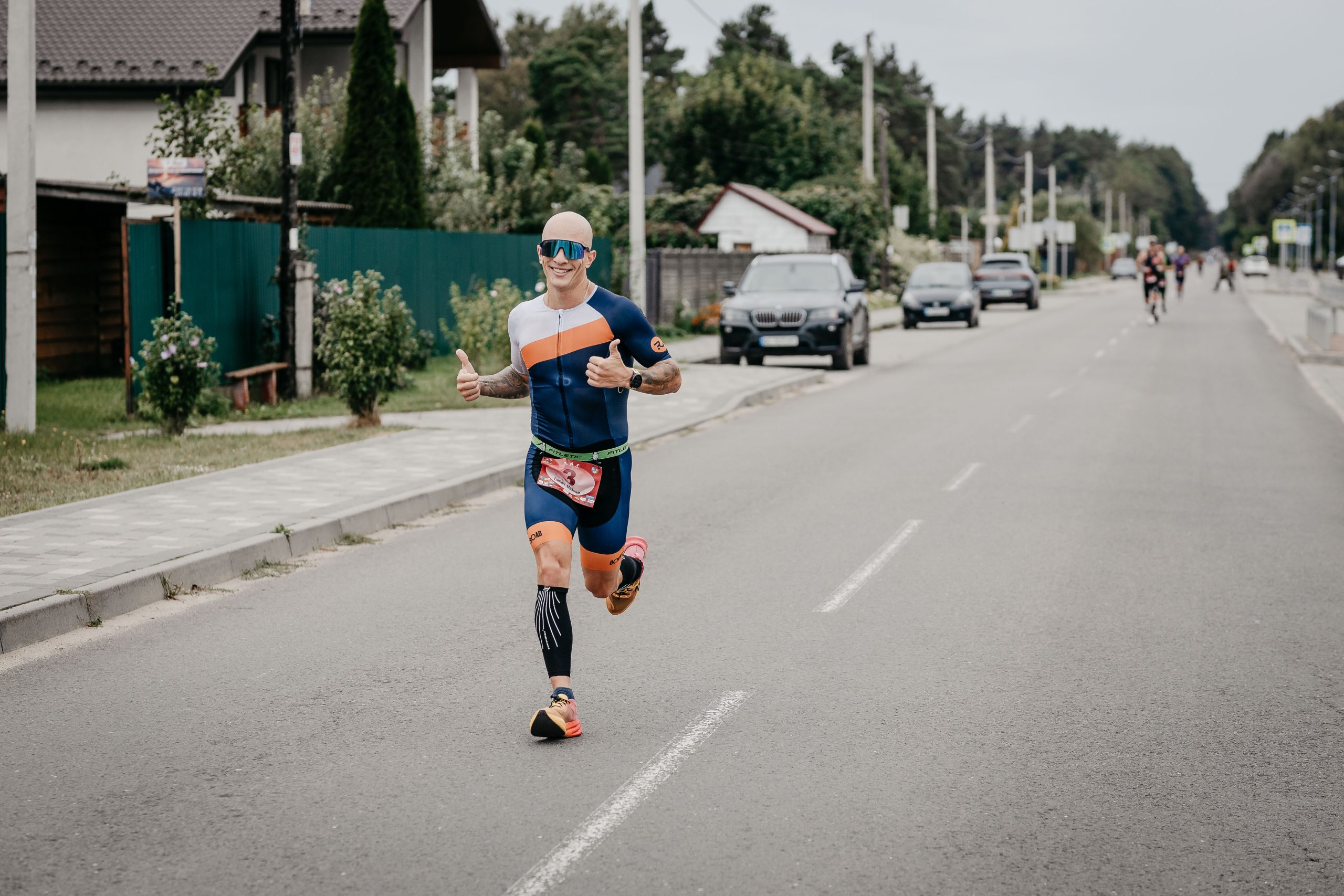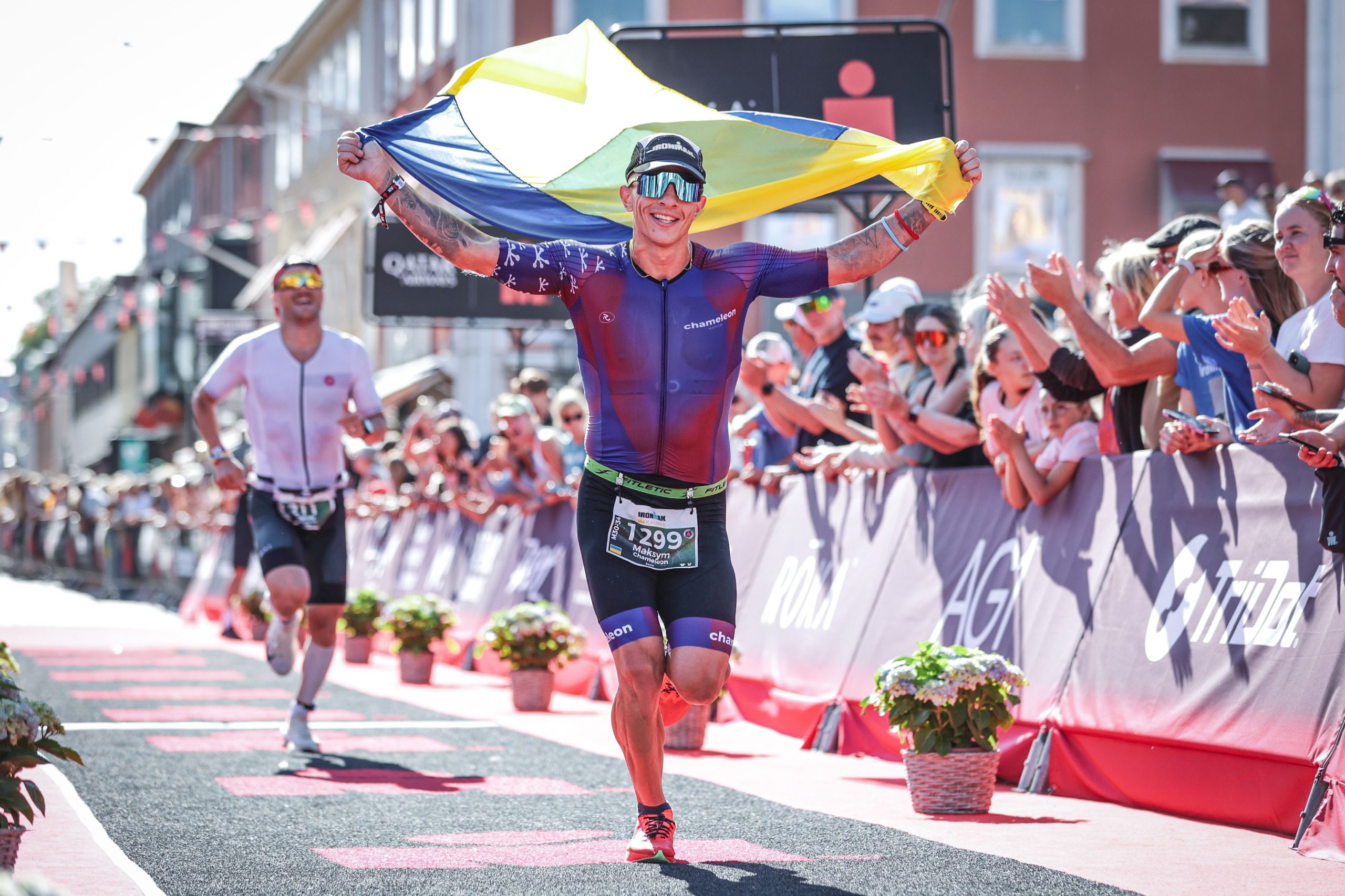The Ironman triathlon is one of the world’s most grueling and prestigious long-distance races.
It combines three challenging disciplines – swimming, cycling, and running – in a single, continuous competition.
Originating in Hawaii, the birthplace of the Ironman, this ultimate test of athleticism has become a global phenomenon.
It attracts elite athletes and passionate enthusiasts alike.
Delving deeper into the realm of Ironman distances, we want to shed light on the average Ironman triathlon world championship time.
We will start with understanding the nuances of each stage – swimming, cycling, and running distances.
Also, we will explore the factors that influence the completion time and give valuable insight into the scale of the challenge that Ironman presents to us.
So, let’s start this journey to unravel the dimensions of an Ironman triathlon and decipher the average time that makes or breaks the endurance of its participants.
The Ironman Distance Triathlon Overview
Embarking on the Ironman journey is a profound testament to the convergence of human endurance and multidisciplinary athleticism.
Within the triathlon’s grueling course lies a symphony of challenges. Each segment demands a unique set of skills, resilience, and strategic prowess.
Swim Leg
The swim leg initiates the Ironman journey and is a test of aquatic prowess.
The standard Ironman triathlon swim distance is 2.4 miles (3.86 km), typically conducted in open water such as oceans or lakes.
However, there are variations depending on the event and venue. Some competitions include river swims or point-to-point races.
These variations add an element of unpredictability. At the same time, forcing athletes to adapt to different water conditions.
The swim leg introduces unique challenges, from navigating through open water currents to contending with potential waves.
Athletes must also factor in elements like water temperature, which can vary significantly between race locations and seasons.
Buoyancy, visibility, and drafting become crucial aspects that athletes need to strategically address to optimize performance.

Ironman Race Average Time for the Swim Leg
The ironman average time to complete the Ironman swim leg varies from participant to participant.
It depends on the level of training, experience, and environmental factors.
Elite swimmers may finish the swim in around 45 to 60 minutes, showcasing remarkable speed and efficiency.
However, for the broader participant base, the swim leg often takes between 1 hour and 15 minutes to 1 hour and 45 minutes.
It’s important to note that this is just the initial stage of the full Ironman, setting the tone for the rigorous challenges that lie ahead in the bike and run legs.
Bike Leg
The bike leg of the Ironman is a formidable test of endurance and strength, covering a challenging distance that separates the contenders from the rest.
Traditionally set at 112 miles (180.25 km). This race segment presents terrain and elevation variations, making each course distinct.
Some Ironman triathlon events take place on flat, fast tracks.
While others take place over hilly or mountainous terrain, requiring a variety of cycling skills.
Hence, athletes must be prepared to tackle various terrains, from smooth asphalt to uneven roads and steep ascents.
The elevation gains in certain Ironman courses pose an additional layer of difficulty, requiring participants to strategically manage their energy and pacing.
Factors such as wind resistance and weather conditions further complicate the bike stage.
They affect both the overall time and the physical exertion of the participants.

Average Ironman Bike Time
The average Ironman triathlon time for completing the Ironman bike leg is influenced by factors such as the course’s topography, wind conditions, and the cyclist’s capabilities.
Elite cyclists often finish the 112-mile ride in approximately 4 to 4.5 hours, showcasing remarkable speed and stamina.
However, for the majority of participants, completing the bike leg typically takes between 5 and 7 hours.
This stage not only tests physical endurance but also requires strategic planning.
This saves energy for the final stage of the Ironman journey, the race.
Run Leg
The run leg of the Ironman triathlon distance marks the final stretch of the race, where athletes push their bodies to the limit after conquering the swim and bike legs.
Traditionally set at a marathon distance of 26.2 miles (42.2 km), the run leg varies in its course design.
Some races feature flat urban routes, while others incorporate challenging off-road trails or scenic but demanding coastal paths.
The diversity in courses adds an element of unpredictability, requiring participants to adapt their running strategy accordingly.
The physiological challenges of the run leg are profound, as athletes contend with muscle fatigue, dehydration, and the cumulative impact of the previous swim and bike segments.
Running a marathon after swimming and cycling demands mental resilience and a strategic approach to pacing.
Proper nutrition and hydration become critical factors, and participants often face the infamous “runner’s wall” as they navigate the latter stages of the marathon.

Average Time for the Run Leg
The average time for completing the Ironman run leg is influenced by factors such as the course difficulty, weather conditions, and the athlete’s overall fatigue.
Elite runners may complete the marathon in approximately 2.5 to 3 hours, showcasing remarkable speed and endurance.
However, for the majority of participants, finishing the run leg typically takes between 4 and 6 hours.
The cumulative effect of the swim, bike, and run segments adds an extra layer of challenge, making the run leg a true test of an athlete’s physical and mental fortitude.
Athlete Experience and Skill Level
Participation in the Ironman World Championships is a challenging endeavor that calls for more than just physical stamina; it also calls for a thorough comprehension of the nuances of the sport.
As athletes gear up to swim, cycle, and run, their completion times reflect their experience, skills, and smart strategies.
1. Training Background
Athlete experience plays a pivotal role in determining full Ironman completion times.
Individuals with a strong foundation in triathlon training, including regular swim, bike, and run sessions, often exhibit better pacing and overall performance.
Novice participants may find themselves grappling with the physical and mental demands, potentially affecting their completion times.

2. Multisport Competency
Athletes proficient in all three disciplines tend to transition more smoothly between legs, optimizing their overall race time.
There are some factors that contribute to the athlete’s ability to navigate the challenges of each stage and, as a result, affect the time it takes to complete it.
Such factors include the ability to swim in open water, efficient cycling technique and well-honed running form.

3. Race Strategy
Experienced participants often develop a strategic approach to pacing throughout the race.
Effective race strategy involves balancing energy expenditure across the swim, bike, and run legs, adapting to course variations, and managing physiological demands.
Such strategic planning can significantly influence an athlete’s overall completion time.
For elite athletes aiming for record-breaking performances, the total Ironman race average time may hover around 8 to 10 hours, showcasing exceptional prowess across all three legs.
The broader participant base, encompassing a diverse range of skill levels and experience, often completes the Ironman triathlon within a more extended time frame, with total times typically ranging from 10 to 17 hours.
Course Difficulty and Environmental Conditions During Ironman Triathlon
The challenge of the Ironman triathlon extends beyond the individual athlete, transcending the realms of personal skill and experience.
The completion times in races are like threads woven into a big picture, made up of different kinds of race tracks.
These tracks include hills, valleys, and weather conditions, all mingling with the determination of athletes aiming to conquer tough endurance challenges.
1. Topography and Elevation
The topography of the race course, especially during the bike and run legs, introduces variations in elevation that directly impact the completion average Ironman time.
Hilly or mountainous terrains demand additional effort, potentially slowing down participants, while flatter courses may allow for quicker speeds.
2. Weather Challenges
Environmental conditions, including weather patterns, can be unpredictable and significantly affect the completion average Ironman 70.3 times. Check out this Ironman 70.3 race recap to see how even perfect weather can play a bad joke on you.
Unfavorable weather can make an athlete feel more physically exhausted and impair their ability to maintain a steady pace.
Examples of such weather include strong winds, precipitation, and high temperatures.
3. Course-Specific Factors
Each Ironman event is unique, featuring distinct course characteristics.
Factors such as the type of swim venue, road conditions for cycling, and the nature of the running route contribute to the overall difficulty.
Athletes must adapt to these specific challenges, and the course’s level of difficulty directly influences the time required for completion.
Understanding the interplay between athlete factors and course-specific variables provides valuable insights into the diverse completion average time for an Ironman observed across various Ironman events.
Both seasoned competitors and first-time participants must navigate these factors effectively to optimize their performance in this ultimate test of endurance.
Trends and Changes in Completion Times Over the Years
The dynamic landscape of Ironman triathlons is not confined solely to the racecourse.
It extends into the realms of training methodologies, professionalization, and the evolution of equipment.
In examining the trends and changes in completion times over the years, we unveil a captivating narrative that reflects the adaptability and progress within the world of endurance sports.
Looking for an ultimate training plan for your first race? Check out this Ironman 6 months training plan to finish strong.
1. Increased Professionalism and Specialization
The professionalization of Ironman racing has led to a surge in dedicated, full-time athletes.
These professionals bring a higher level of expertise and specialization to the sport, influencing the competitive landscape.
As a result, the average time for the Ironman may reflect the impact of elite athletes pushing the boundaries of human performance.
2. Advancements in Sports, Science and Technology
The marriage of sports science and technology has played a pivotal role in shaping the average Ironman time.
Advancements in training monitoring, biomechanics, and nutrition have enabled athletes to optimize their readiness.
Additionally, advancements in gear and equipment, such as aerodynamic bicycles and high-performance wetsuits, contribute to increased efficiency and potentially faster overall times.
3. Record-Breaking Performances
Periodic instances of record-breaking performances by elite athletes influence the perception of what is achievable in a full Ironman distance triathlon.
These exceptional feats not only inspire others to push their limits but also contribute to an evolving standard of excellence, potentially driving down average Ironman time.
Fastest Ironman Finish Times
The quest for the fastest Ironman race average time has produced awe-inspiring achievements by elite athletes.
Notable records are often set by professionals who exemplify exceptional speed and endurance.
These records, recognized globally, serve as benchmarks for aspiring triathletes and elevate the prestige of the Ironman event.
Men’s Ironman World Championship Record
With a time of 7 hours, 51 minutes, and 13 seconds, Jan Frodeno set a new course record at the 2019 Ironman World Championship in Kona, Hawaii.
Women’s Ironman World Championship Record
Daniela Ryf holds the women’s course record at the Ironman World Championship in Kona.
She set the record in 2018 with 8 hours, 26 minutes, and 18 seconds.

Individual Accomplishments
Celebrating individual achievements, several athletes have etched their names in Ironman history by achieving remarkably fast finish times.
Their dedication, training, and resilience converge to produce performances that inspire the entire triathlon community.
Legendary Performances and Iconic Moments
Within this crucible of endurance, certain legends have emerged, etching their names into the annals of Ironman history.
In this exploration of legendary performances and iconic moments, we delve into the awe-inspiring achievements of three remarkable athletes who have left an indelible mark on the sport.
1. Chrissie Wellington’s Dominance
Chrissie Wellington’s impact on women’s Ironman racing is nothing short of legendary.
Undefeated in Ironman distance races, Wellington’s consistency at the highest level is a testament to her exceptional talent and dedication.
Multiple Ironman World Championship victories underscore her dominance, with completion average Ironman time often hovering around the 8:30 to 9:00 hour mark.
Wellington’s ability to maintain such impressive paces across the swimming in triathlon, bike, and run segments places her in the pantheon of Ironman greatness.
2. Mirinda Carfree’s Marathon Magic
Mirinda Carfrae’s prowess in marathon running at the Ironman World Championship has become the stuff of legends.
Known for her exceptional running ability, Carfrae’s marathon splits often clock in around the 2:50 to 3:00-hour range.
These blistering times are not just about winning races.
They signify a unique mastery of pacing and mental fortitude, showcasing Carfrae’s ability to unleash her running prowess when it matters most.
If you are planning your next marathon, check out these marathon pacing strategy tips for optimal performance.
3. First-Ever Sub-Eight-Hour Ironman
Breaking the eight-hour barrier in an Ironman was once considered an extraordinary feat.
Athletes who achieved this milestone, such as Tim Don, symbolize the relentless pursuit of excellence.
Their performances have redefined expectations and opened new frontiers in pursuing faster Ironman triathlon average time.
These notable records and achievements not only showcase the incredible athleticism of elite competitors but also underscore the broader ethos of the Ironman triathlon.
А celebration of human endurance, determination, and the relentless pursuit of personal excellence.
Conclusion
The Ironman distance triathlon is an enduring symbol of human resilience.
Just like other triathlon distances – sprint triathlon and Olympic distance triathlon, this race pushes the boundaries of physical and mental endurance. However, to a much wider extent.
The importance of Ironman in the world of endurance sports is profound.
Iron distance races shape the lives of athletes, inspire communities, and go beyond the realm of ordinary sporting events.
Ironman’s reputation as the ultimate endurance test is not without merit.
Overcoming the grueling 140.6-mile course forces participants to dig deep into their physical and mental reserves.
Reaching the Ironman finish line involves more than just physical endurance.
It is a transformative experience that requires unwavering discipline, dedication and the ability to overcome adversity.








